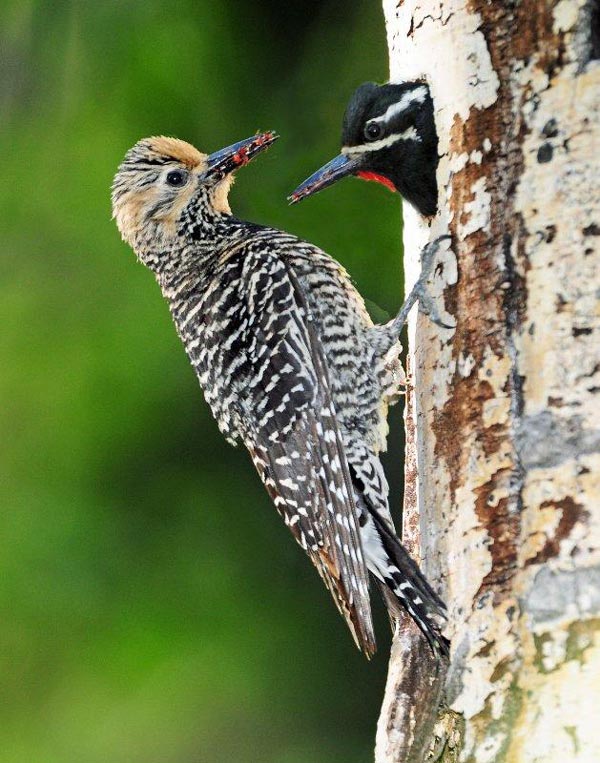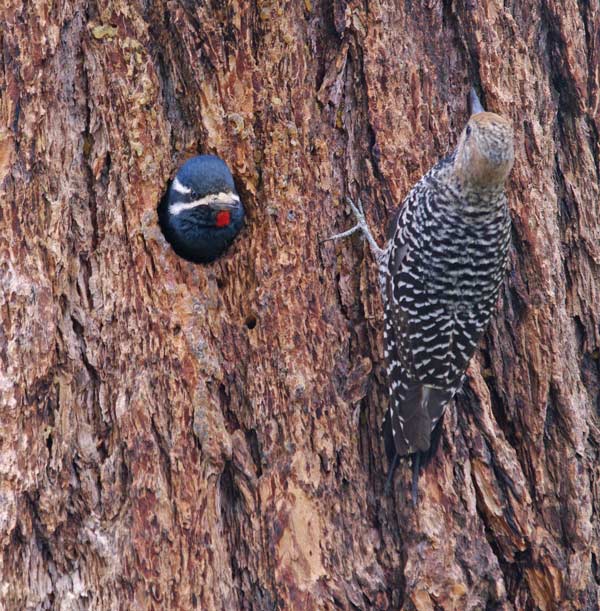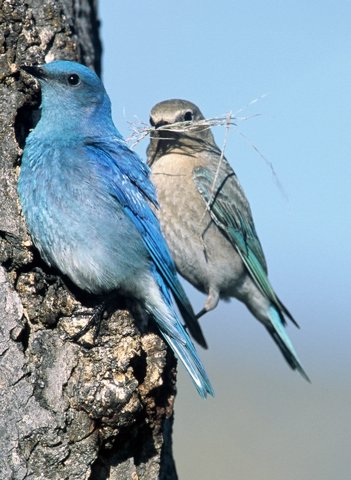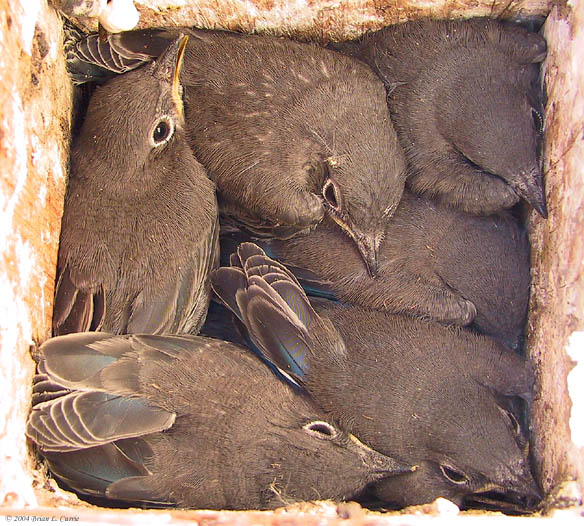|
|
|
Introduction |
Secluded Place |
Scrape | Mound | Burrow | Cavity | Plate |
Platform |
Pendant | Sphere |
Cup | Host | |
Cavity Nests
Some
woodpeckers, trogons, and nuthatches can excavate their own
nesting holes. Other birds like chickadees, bluebirds, some owls,
ducks and flycatchers use holes abandoned by their "previous
owners."
|
|
 Williamson's
Sapsuckers usually nest in a hole in the trunk of a partly
decayed pine or aspen tree. The nest hole can be as low as 5
feet or as high as 60 feet above the ground. Williamson's
Sapsuckers usually nest in a hole in the trunk of a partly
decayed pine or aspen tree. The nest hole can be as low as 5
feet or as high as 60 feet above the ground. |
Changing of the Guard, by Paul Higgins
İPaul Higgins
|
|

The male and female both incubate the 3 to 7
(usually 5 or 6) eggs, for 12 to 14 days. The young will
leave the nest 29 to 35 days after hatching. |
Taking Turns, by Marlene Foard
İMarlene Foard
|
|

Mountain Bluebirds nest in cavities
which they line with weeds, rootlets, grasses and other organic
fibers. Usually they lay 4 to 6 eggs which are incubated for
about 14 days. |
Mountain Bluebird Pair
İKent Keller
|
|

The young bluebirds will leave the nest about 21 days
after hatching. |
Nesting Box of Bluebirds
İBrian L. Currie
|
|
|